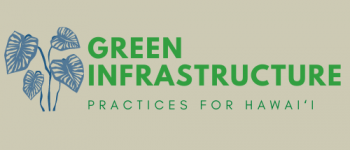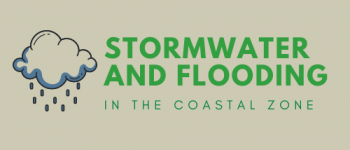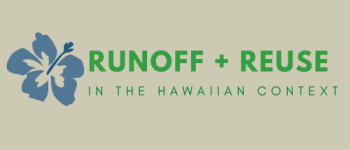Green Infrastructure Glossary
An aquifer is a formation, group of formations, or part of a formation that contains sufficient saturated, permeable material to yield significant quantities of water to wells and springs.
Bioretention is the process in which contaminants and sedimentation are removed from stormwater runoff. Stormwater is collected into the treatment area which consists of a grass buffer strip, sand bed, ponding area, organic layer or mulch layer, planting soil, and plants.
The Clean Water Act (CWA) establishes the basic structure for regulating discharges of pollutants into the waters of the United States and regulating quality standards for surface waters. The basis of the CWA was enacted in 1948 and was called the Federal Water Pollution Control Act, but the Act was significantly reorganized and expanded in 1972. “Clean Water Act” became the Act’s common name with amendments in 1972. (EPA)
The Clean Water Action Plan contains a large number of key actions aimed at halting wetlands loss and beginning the difficult process of gaining acres of wetlands each year. There are a number of regulatory, financial incentive, and voluntary programs to protect and improve wetlands. (EPA)
The Coastal Zone Management Act administered by NOAA, provides for the management of the nation’s coastal resources, including the Great Lakes. The goal is to “preserve, protect, develop, and where possible, to restore or enhance the resources of the nation’s coastal zone.” (NOAA)
Creek daylighting means exposing a previously covered stream to the open environment.
Evapotranspiration is the return of water to the atmosphere either through evaporation or by plants.
The first flush is the initial surface runoff of a rainstorm.
A flash flood is a sudden local flood, typically due to heavy rain.
Green Infrastructures (GI) are systems and practices that use or mimic natural processes to infiltrate, evapotranspirate, or reuse stormwater or runoff on the site where it is generated.
Greenways is a corridor of undeveloped land preserved for recreational use or environmental protection
Grey Infrastructure is another name for hard infrastructures or systems engineered and constructed by humans, such as roads, utilities, and flood control works.
Groundwater Recharge is a hydrologic process where water moves downward from surface water to groundwater. This process usually occurs below plant roots and is often expressed as a flux to the water table surface.
Impervious Surfaces are hard surfaces that prevent the infiltration of stormwater such as concrete sidewalks, roads and lots paved with asphalt, and roofs. As the natural landscape is paved over, the volume and velocity of surface runoff increases and results in a decrease in infiltration, causing a cascade of impacts on water quality and quantity, which degrades water resources.
Impervious Surface Coverage (IC) is a quantifiable land-use indicator that correlates closely with the adverse impacts of polluted runoff.
Infiltration, in relation to surface waters, is a process where water soaks into the ground. Infiltration plays an important role in groundwater recharge
Infrastructure is the facilities and services necessary for a society, community, or economy to function.
Low Impact Development (LID) is mainly focused on planning and designing the built environment to mimic the pre-developed hydrological regime and street stormwater of the site. Synonymous with Green Infrastructure.
Nonpoint Source Pollution (NPS) the U.S. Environmental Protection Agency (EPA) defines NPS pollution as that which is “caused by diffuse sources that are not regulated as point sources and are normally associated with precipitation and runoff from the land or percolation.” In Hawai’i, we see nonpoint pollution in our streams and bays where the source of pollutants comes from many sources such as cleaning chemicals from homes, fertilizers from agriculture or golf courses, oil from roads, and sediment from disturbed soils.
Nonpotable Water means water that does not meet State Department of Health drinking water standards.
A Rain Garden is a deliberately build depression planted with vegetation that allows stormwater from impervious surfaces to collect, briefly settle, then infiltrate into the ground. Rain gardens filter pollutants from runoff, assist with groundwater recharge, improve the asthetic beauty of the land scape, and reduce flood volumes.
State Waters, as defined by section 342D-1, HRS, means all waters (fresh, brackish, or salt) around and within the State, including, but not limited to, coastal waters, streams, rivers, drainage ditches, ponds, reservoirs, canals, ground waters, and lakes, providing that drainage ditches, ponds, and reservoirs required as part of a water pollution control system are excluded.
Swales (a.k.a. grassed channel, dry swale, wet swale, biofilter, or bioswale) refers to a vegetated, open-channel management practice designed specifically to treat and attenuate stormwater runoff for a specified water quality volume.
Urban Sprawl, as used by land developers, planners and governmental institutions, critically describes a pattern of low-density, often unsightly, automobile dependent development that has been a common form of growth outside of urban areas since at least World War II. One popular typology distinguishes between categories of sprawling development such as low density, strip, scattered, or leapfrog. Many people “know it when they see it”. [Cornell]
A watershed is an area that drains to a common waterway, such as a stream, estuary, wetland, or the ocean.







